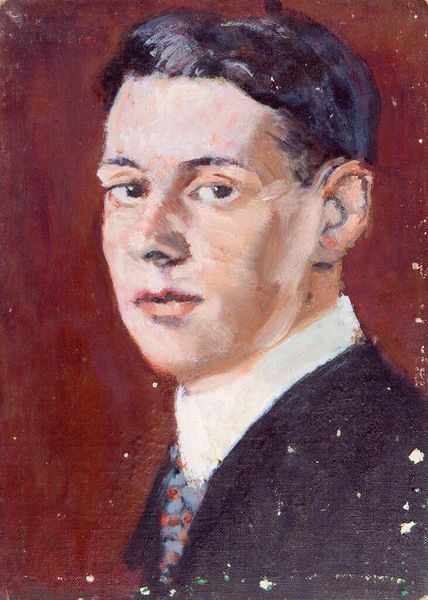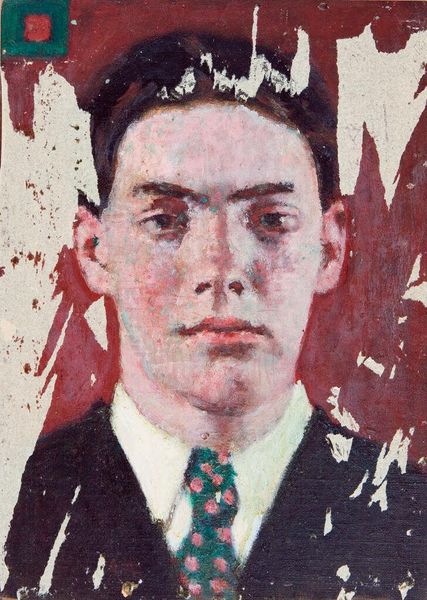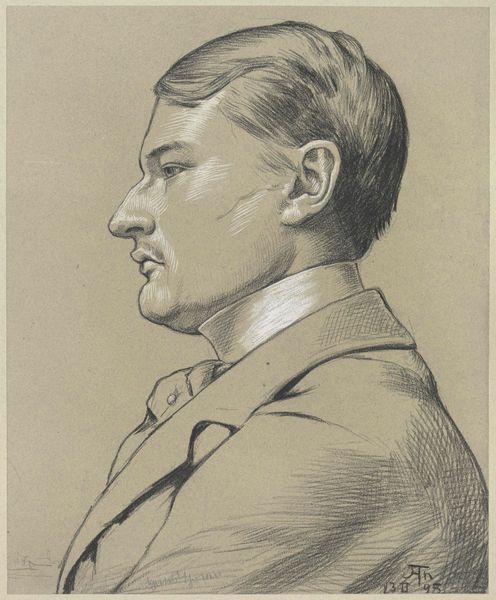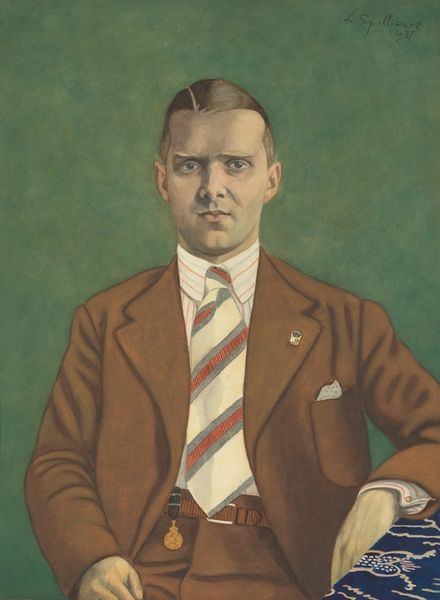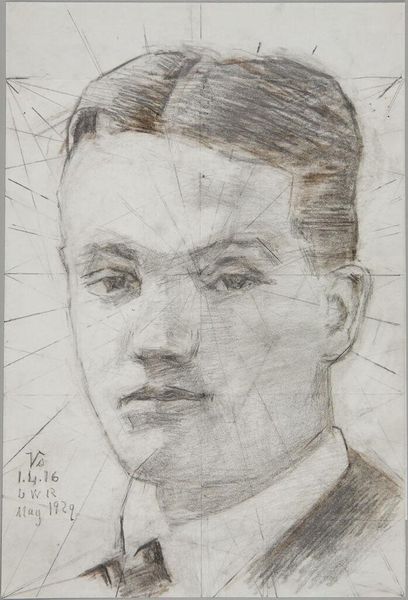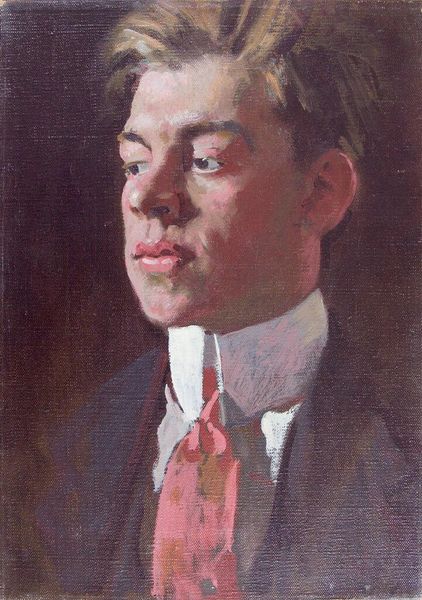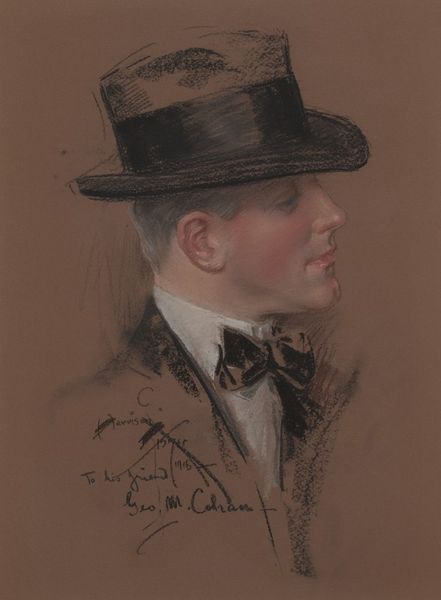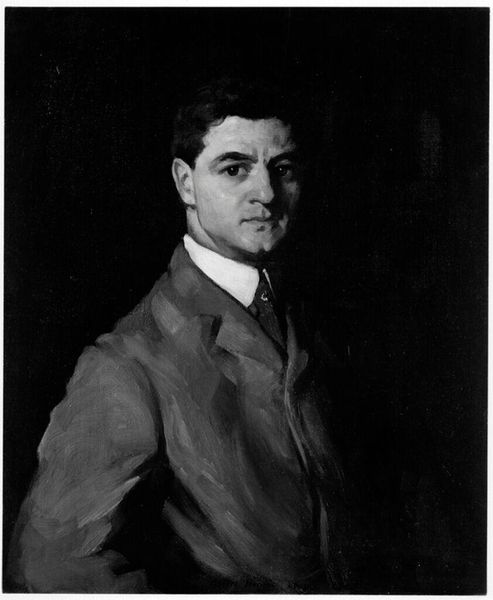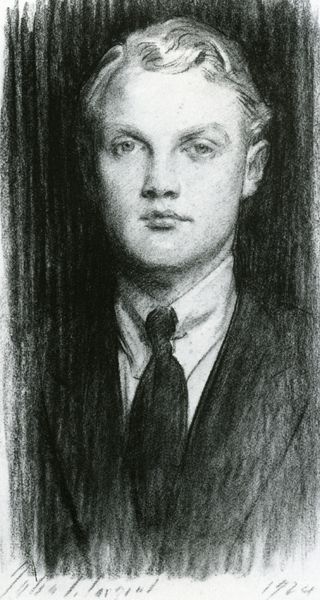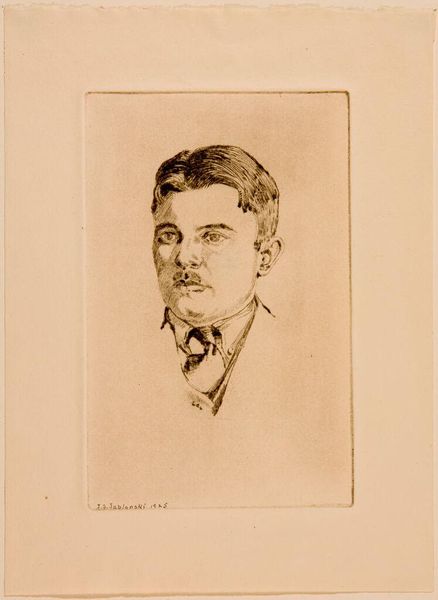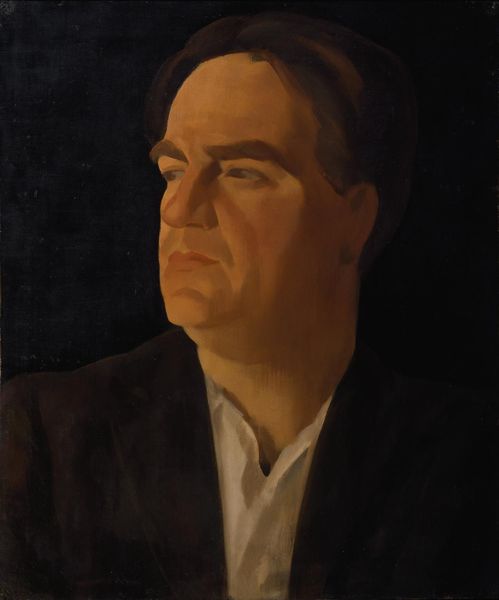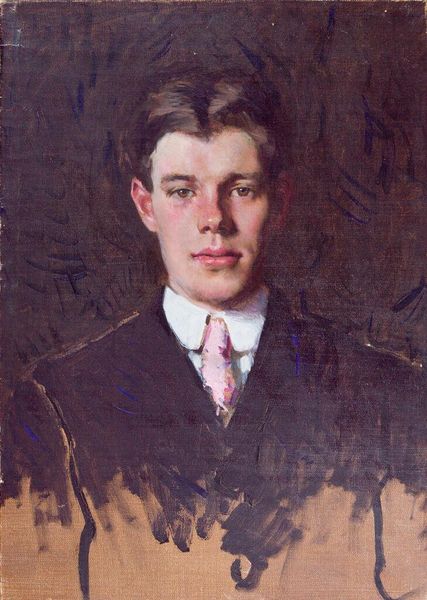
painting, acrylic-paint
#
portrait
#
painting
#
acrylic-paint
#
figuration
#
portrait drawing
#
modernism
Copyright: Public Domain: Artvee
Editor: This is J.C. Leyendecker’s "Preliminary study, Cluett, Peabody & Co, Arrow collar advertisement," from around 1924, painted with acrylic. I’m struck by the smooth, almost porcelain-like skin of the figure; it's idealized, yet feels kind of unsettling, like a mask. What's your take? Curator: It's fascinating how you pinpoint that unsettling feeling! Leyendecker was, in many ways, creating a hyper-masculine ideal for the consumer age. Consider the historical context: this was the era of burgeoning advertising and mass production. This "Arrow Collar Man" wasn't just selling detachable collars; he was selling an aspirational lifestyle, projecting an image of WASP male dominance and subtle class privilege. Editor: So the ad campaign was doing more than just selling collars? Curator: Precisely! It was normalizing a particular brand of masculinity deeply intertwined with societal power structures, which actively excluded anyone who did not fit that mold. Do you see the specific ways in which this image achieves that goal? Editor: Well, the model is so polished and confident. And the angle, looking slightly down… he appears in control, powerful. Curator: Exactly! And consider how that idealized image perpetuated harmful beauty standards and notions of success that privileged white, upper-class men. This wasn't just about selling a product, it was about reinforcing a social order. Can we think of some contemporary versions of that? Editor: Absolutely! So many modern advertisements still link products with exclusive lifestyles. It's interesting to see the roots of that here. Thanks! Curator: My pleasure. It’s vital to analyze these visual texts and recognize the cultural narratives they uphold.
Comments
No comments
Be the first to comment and join the conversation on the ultimate creative platform.


